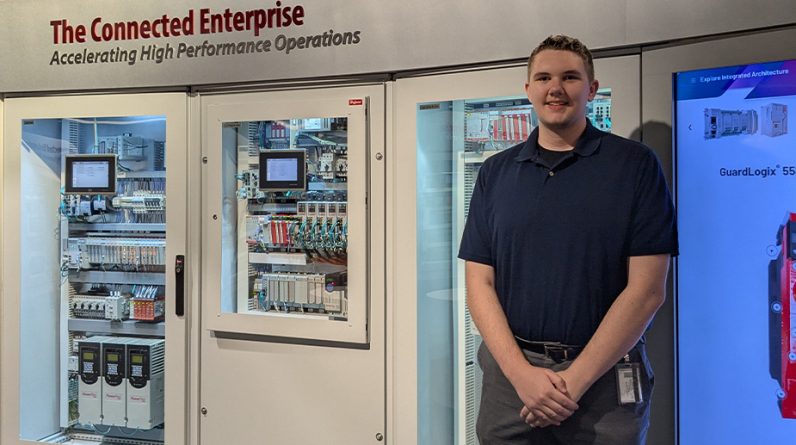There is a lot of chatter around Artificial Intelligence (AI) and machine learning (ML), and while some brands are leveraging these tools, many still aren’t taking full advantage of them. According to Brian Walker, e-commerce expert and CSO at Bloomreach, there has been meaningful progress over the last three years, but there’s much work still to do. He shared his perspectives on the use of AI and machine learning for commerce brands.
Fulfilling the primary use case for AI
The primary AI use case for e-commerce and marketing focuses on data, according to Walker. Companies are bringing together all their customer and product data in a central location and leveraging AI to normalize that data. Customer Data Platforms (CDPs) are a foundational technology that has helped make this happen. But now that you have that complete and accurate view of your customers, what’s next? How do you act on it and make it a routine part of your business process?
Walker argues that you need to get your people to think about first, leveraging data to drive desired outcomes. That can be a hard thing to do. Many merchandisers and marketers grew up thinking their job was to drive ideas, outcomes, and content. But that approach doesn’t scale, especially when you start talking about creating personalized, targeted experiences.
We’re on the cusp of (another) ‘revolution’ where AI will impact marketing and commerce. That’s the revolution everyone is talking about today. You can’t read three posts on LinkedIn without someone talking about AI-generated content and images(ChatGPT, Dall-E). AI-generated content isn’t exactly new – many solutions are available that help generate subject lines and ad copy using the power of AI and ML – but this new breed of technology is pushing us further, faster.
That said, this isn’t the next use case for AI. Instead, the next use case focuses on activating on the data companies have unified in their CDP or similar platform.
You have a unified data view – now what?
A lot of companies have invested in CDPs, but they have yet to put in place the processes and solutions necessary to act on that data. Walker believes companies aren’t using AI effectively in their marketing channels – not search, merchandising, or digital experience content. That, he said, is the low-hanging fruit for most companies today.
So how do you take that data and activate on it in an automated way? You need to leverage AI and ML, Walker said. You must continually test and optimize, generating variations of content and experiences, and see what works. That’s where AI comes in. Scale helps, but AI models have improved to the point where any size company can take advantage; it’s no longer just for large enterprises with massive datasets.
Bloomreach has focused its product, Bloomreach Engagement, on enabling that activation, which Walker pitches as a key differentiator for the company.. It combines a customer data engine(technically a CDP), activation tools, and integrated marketing channels. AI and ML are baked into the product and enabled through self-service tools for marketers and merchandisers. Walker said Bloomreach has been optimizing its algorithms and machine learning for twelve years across many commerce verticals, so brands get the value of that effort without having to invest in writing complex algorithms, investing in data scientists, or writing bespoke solutions.
Marketers and merchandisers get the controls and insights that enable them to understand what’s happening, and they can make data-backed decisions to personalize experiences.
It’s a symbiotic relationship because you (the marketer) are telling the AI/ML what to pay attention to, and you are fine-tuning experiments and testing ideas. The AI is leveraging all your customer data to run those experiments and determine what customers ultimately want.
Many are still trying to catch up
We know personalization is good, Walker says,, because customers respond well when it’s done effectively (and lots of research says customers want a personalized experience). And according to a CommerceNext study, 52% of companies plan to continue investing in personalization this year, even as other investments are declining due to a poor economic environment.Also, a study by Pecan found that 51% of those surveyed said increasing personalization would significantly influence the decision-making process.
There is a level of cynicism towards personalization because there have been (and continue to be) many failed attempts at doing it. Many of these failures go back to not having that unified dataset because you end up personalizing only parts of the experience without it. Walker also mentioned the issues around data privacy and the feeling of being stalked on the internet – not personalization challenges exactly, but relevant to the over experience.
Walker concludes by saying AI is necessary to scale out and deliver end-to-end personalization. And there have been a lot of improvements in the tools that help brands get caught up.
My take
Brands embracing personalization (and AI) are looking at how they can extend it beyond marketing channels. Walker suggests there is a huge spectrum of important insights that you can gain by paying attention to all parts of the customer journey. As an industry, we’re only focused on the first few (marketing optimization and site experience conversion rates being two). But Walker pointed to other areas where AI can have a positive impact, such as returns, which greatly impact business results and the environment.
This conversation focused on B2C commerce and marketing, but the implications for B2B also ring true. Personalization is necessary, but it needs to be done well. That requires a unified customer view (which itself requires some AI and ML), but that is only the beginning. It’s what you do with that unified data that we need to talk more about and understand how AI and ML are leading the way to deliver the experiences customers demand.
And that revolution mentioned earlier? It’s bringing forward another set of innovations that will impact copywriting, graphic design, and content creation, Walker said. We’re nowhere close to commercializing it or impacting customer experience, but he said you need to start preparing for it, including putting in place the processes and culture to leverage these tools.





